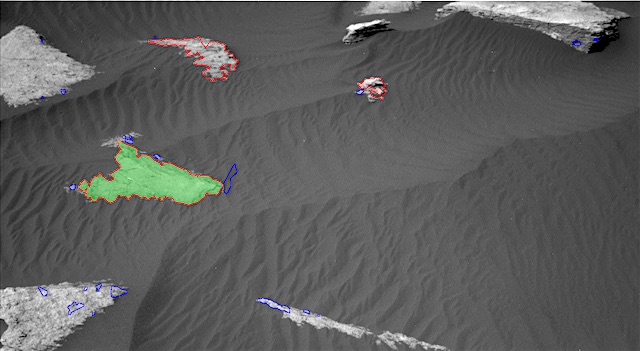 Artificial intelligence is changing how we study Mars. A.I. software on NASA’s Curiosity Mars rover has helped it zap dozens of laser targets on the Red Planet this past year, becoming a frequent science tool when the ground team was out of contact with the spacecraft. This same software has proven useful enough that it’s already scheduled for NASA’s upcoming mission, Mars 2020.
Artificial intelligence is changing how we study Mars. A.I. software on NASA’s Curiosity Mars rover has helped it zap dozens of laser targets on the Red Planet this past year, becoming a frequent science tool when the ground team was out of contact with the spacecraft. This same software has proven useful enough that it’s already scheduled for NASA’s upcoming mission, Mars 2020.
A new paper in Science: Robotics looks at how the software has performed since rolling out to Curiosity’s science team in May 2016. The AEGIS software, or Autonomous Exploration for Gathering Increased Science, has been used to direct Curiosity’s ChemCam instrument 54 times since then. It’s used on almost every drive when the power resources are available for it, according to the paper’s authors. (…)
AEGIS allows the rover to get more science done while Curiosity’s human controllers are out of contact. Each day, they program a list of commands for it to execute based on the previous day’s images and data. If those commands include a drive, the rover may reach new surroundings several hours before it is able to receive new instructions. AEGIS allows it to autonomously zap rocks that scientists may want to investigate later.
“Time is precious on Mars,” said lead author Raymond Francis of NASA’s Jet Propulsion Laboratory in Pasadena, California. Francis is the lead system engineer for AEGIS’ deployment on the Curiosity rover. “AEGIS allows us to make use of time that otherwise wasn’t available because we were waiting for someone on Earth to make a decision.” [More at links]








